|
Utah Beekeepers' Association
Serving and Representing Utah's Beekeepers Since 1872; As Currently Organized since 1892.
Mission Statement: Our aim is to keep beekeepers in the state of Utah informed about what is happening in the industry; to promote beekeeping and honey production for all Commercial, Sideliner and Hobbyist Beekeepers.
Do you have a bee swarm in your yard? Don't spray it! Report it!
Melissophobia (or Apiphobia): Fear of bees
Do you have a honey bee swarm in your yard? Subject to caveats given below, a beekeeper near you can help you and help the bees.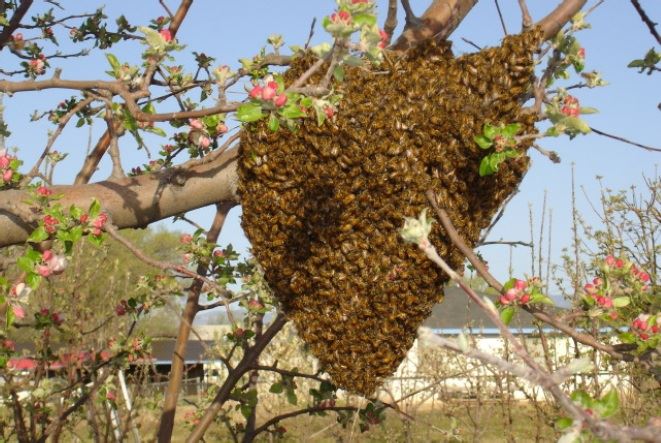
Simply killing the bees that are in your home or other structure does not eliminate the problem. Along with several pounds of dead and rotting bees remaining in your structure, you will still have considerable wax, honey, and brood in in the structure that will attract mice, ants, foul odor, and physical damage. Simply spraying bees that are in your home or other structure may not be your best choice.
Bothered by bees or wasps?
- Dealing with unwanted Honey Bee Colonies
- Bees in a Wall, What can be Done?
- What Everyone Needs to Know About Bee Stings
To find a beekeeper who will safely remove the swarm -- usually at no charge to you -- go to
- Bee Removal Source, or
- Swarm Patrol, or
- Honey Bees 911, or
- BeeSwarmed, or
- Contact your local beekeeper's club, or
- Call your County Bee Inspector or
- Call your County Extension Service.
- In an emergency, call 911.
Please be prepared to provide the following information to help the beekeeper.
- What does the swarm look like? (If the nest has a grey "papery" looking appearance, you do not have honey bees but more likely hornets or wasps.)
- Provide photos.
- Location of the swarm (physical address).
- Your name and phone number.
- What has the swarm landed on?
- How high up is the swarm?
- Are there any special concerns in the area (children, water hazards, bees in the house, etc.)?
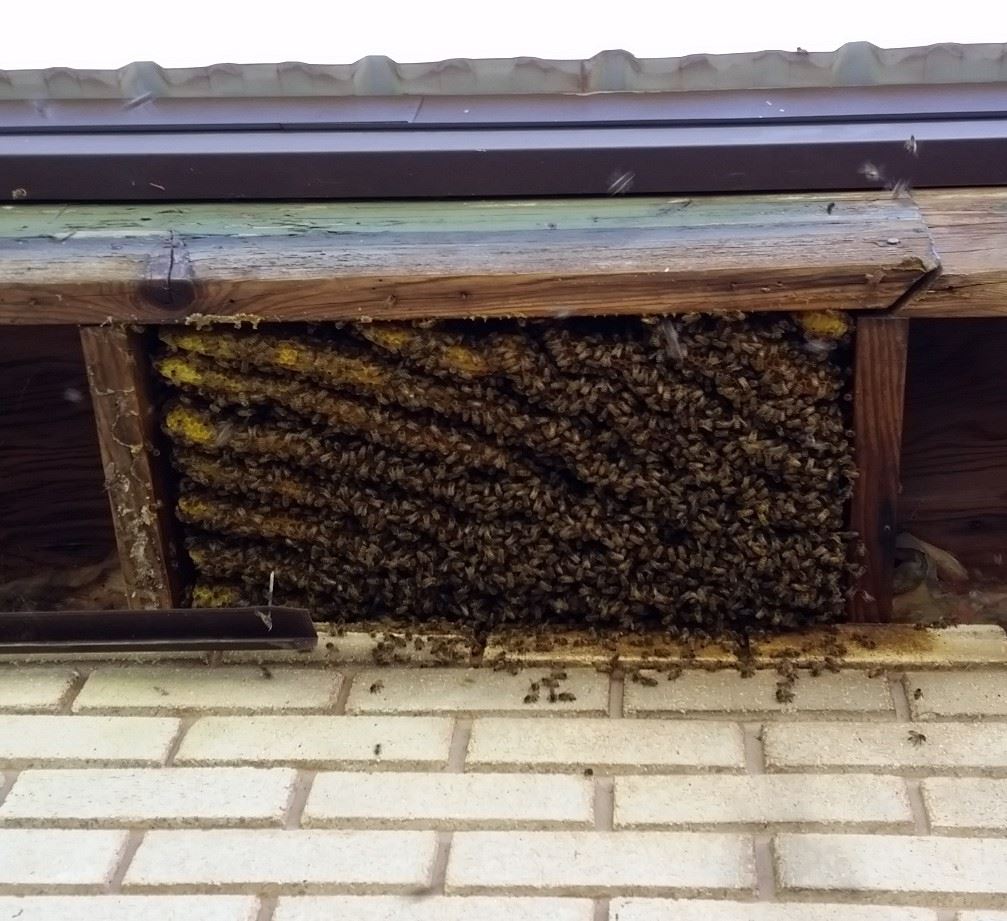
Your beekeeper might also be able to remove an unwanted colony of honey bees that has become established in a hollow tree or in your home or other structure. If he or she needs to open up your structure in any way, they'll need you to sign an agreement that clarifies the work they need to do and any restoration work they will not do. Since removal of honey bees from a structure often requires a lot of time and effort, there may be a charge for this service. Call one of us beekeepers and we'll let you know how or if we can help.
Caveats: We beekeepers are all about caring for the bees. We will remove honey bees from your property when it makes sense and is safe -- often at no charge to the property owner. But, beekeepers are not licensed exterminators. We aren't building contractors. We aren't even in the business as handymen.
That said, responsible beekeepers recognize when the beekeeper's value of removing the bees is exceeded by the homeowner's cost of damage/repair. At some point, the time and effort to remove the bees isn't worth it to a responsible beekeeper and he/she is unwilling to accept the liability or to take time away from family and work.
Beekeepers are not in the business of maintaining anyone's home or dealing with invaders, whether they be mice, ants, flies, spiders, wasps, or even bees. When a bee extraction is beyond the skill and willingness of a responsible beekeeper, he/she will tell you so. At that point, we suggest you call a pest-control and/or a handyman professional.
Many people mistake honey bees with other similar insects such as wasps, hornets, and yellow jackets. We can only help you with honey bees. If you aren't sure which insect you have check the image. If you still don't know, call. We'll help you identify the insect and what to do about it.
Click here for more info on identification of bees and wasps.
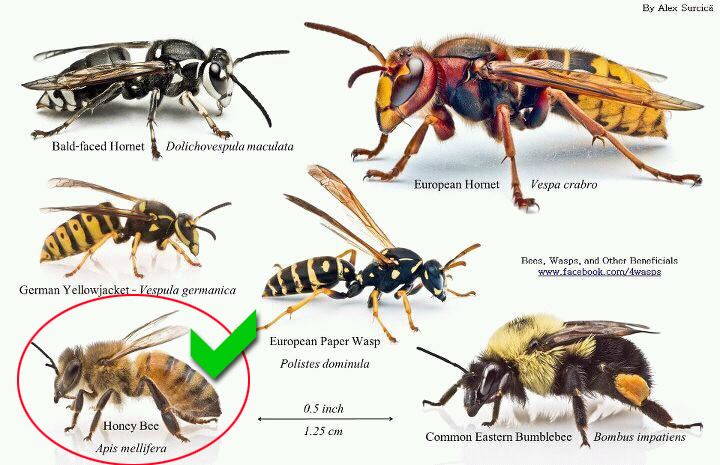
Swarm Prevention for Beekeepers
Swarm Prevention Tips for Beekeepers
Overview of Swarm Prevention for beekeepers

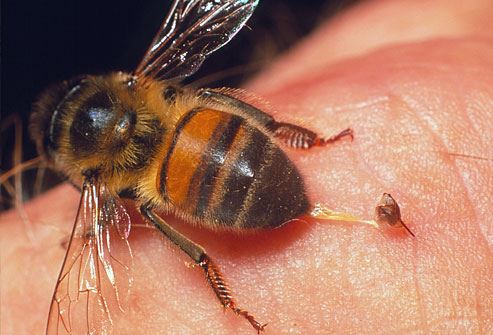 A bee sting victim typically has localized pain and burning, redness, itchiness, and swelling at and around the site of the sting. This is not necessarily an allergic reaction but simply the victim's immune system responding to the bee venom. This is rarely dangerous.
A bee sting victim typically has localized pain and burning, redness, itchiness, and swelling at and around the site of the sting. This is not necessarily an allergic reaction but simply the victim's immune system responding to the bee venom. This is rarely dangerous.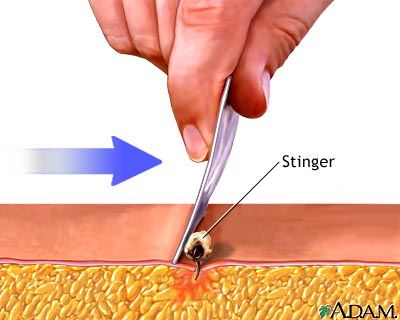 To reduce the amount of venom that is injected into the skin, the stinger must be removed immediately. Do not use fingers to pinch the stinger out or use tweezers or any other tool that would squeeze more venom into the skin. Instead, promptly scrape the stinger off with a card, coin, or fingernail. If a card or coin is not immediately available, don't waste time to find one. Instead, simply use a fingernail to scrape it out.
To reduce the amount of venom that is injected into the skin, the stinger must be removed immediately. Do not use fingers to pinch the stinger out or use tweezers or any other tool that would squeeze more venom into the skin. Instead, promptly scrape the stinger off with a card, coin, or fingernail. If a card or coin is not immediately available, don't waste time to find one. Instead, simply use a fingernail to scrape it out.